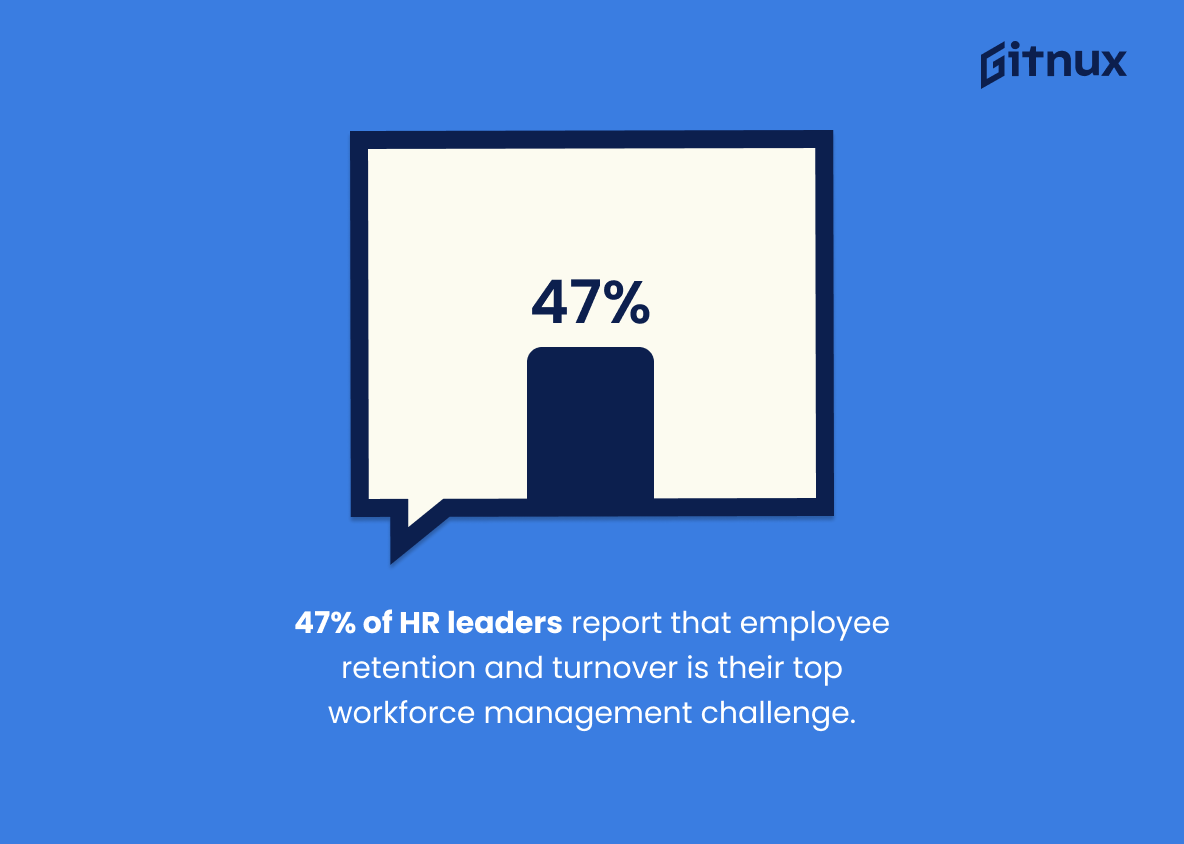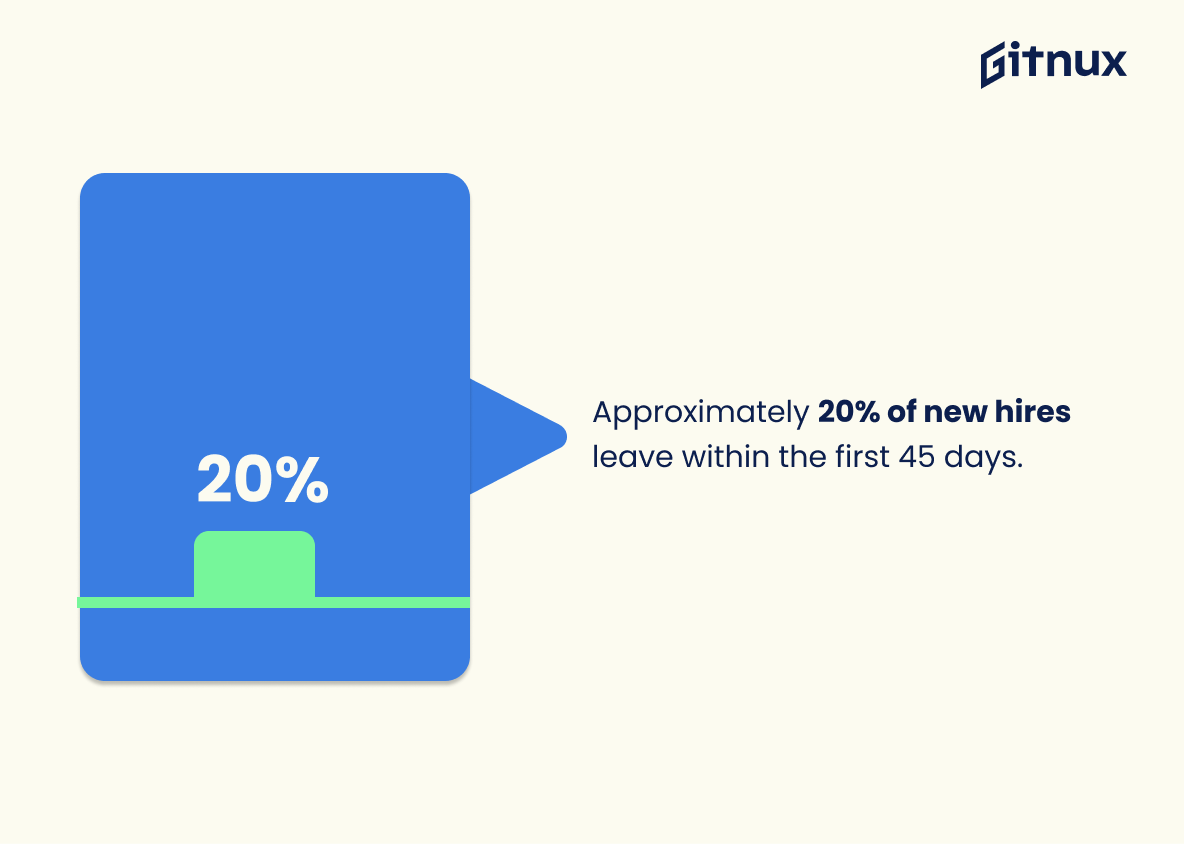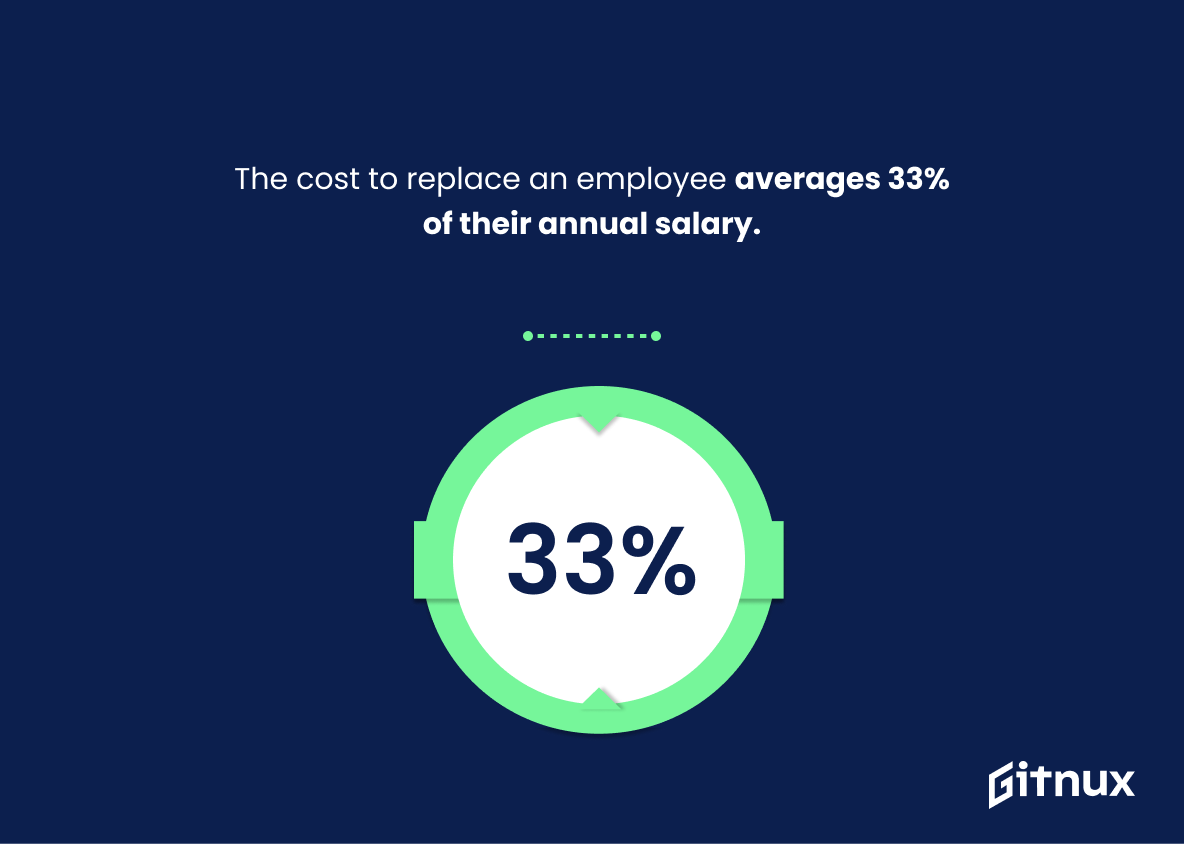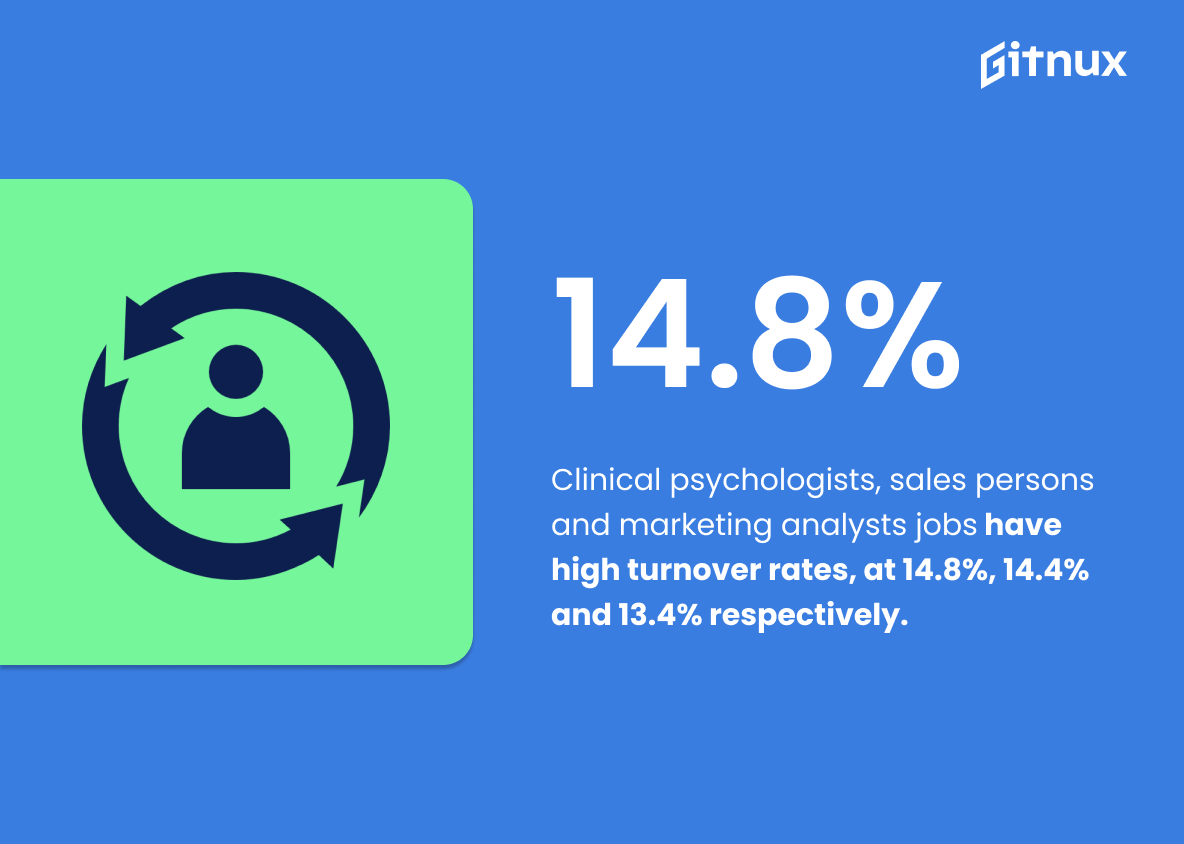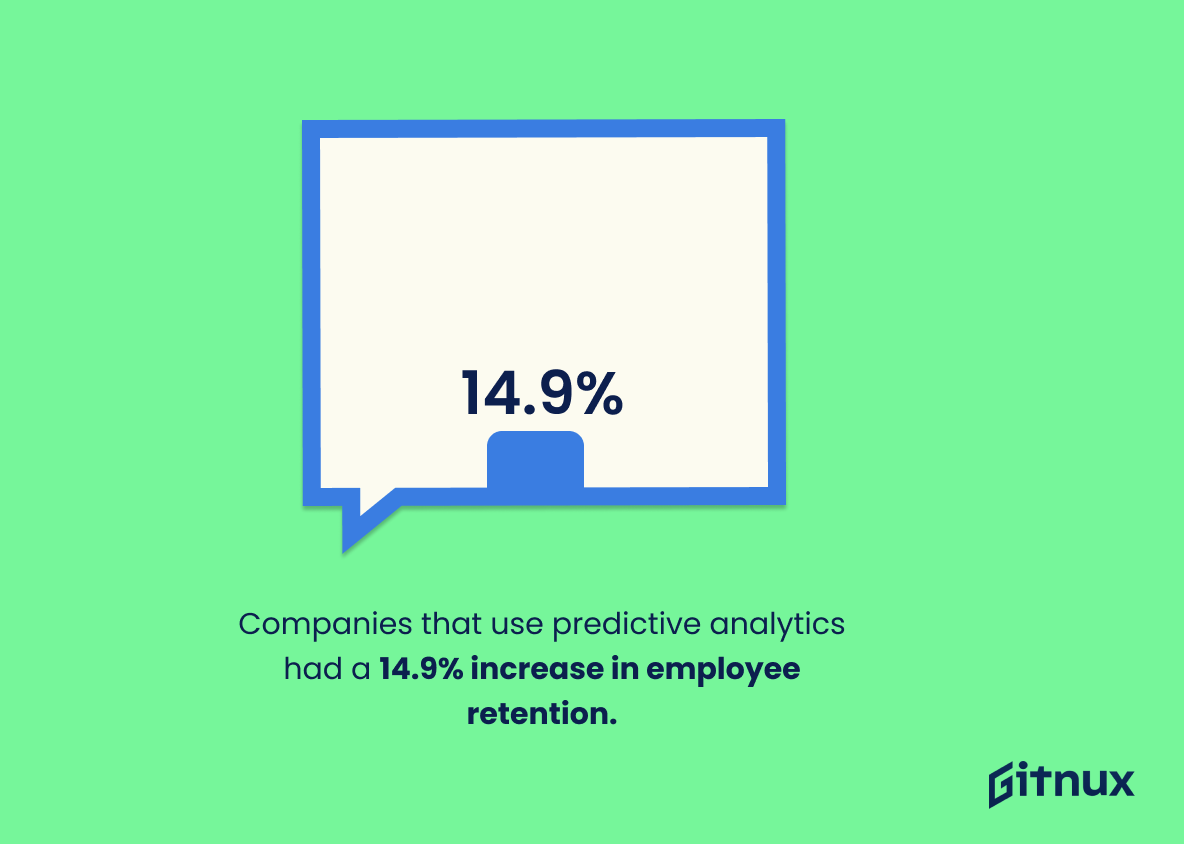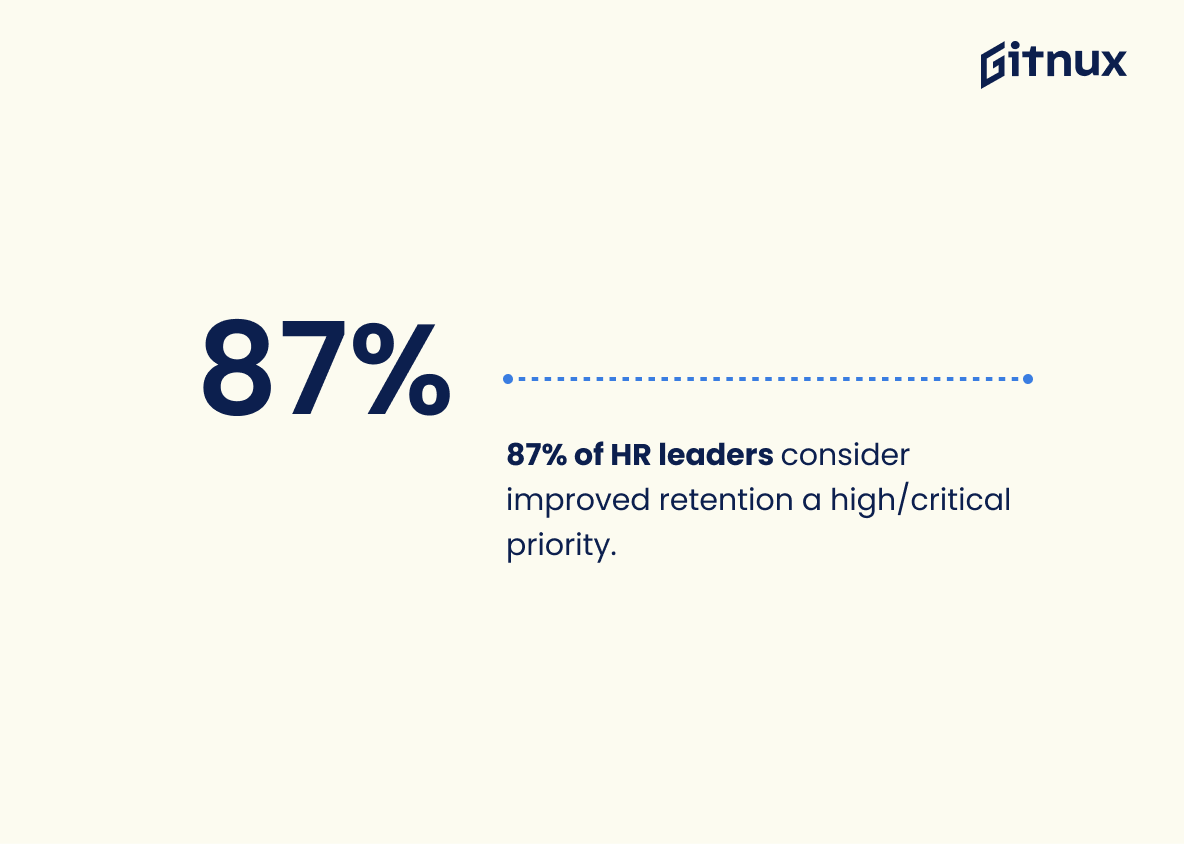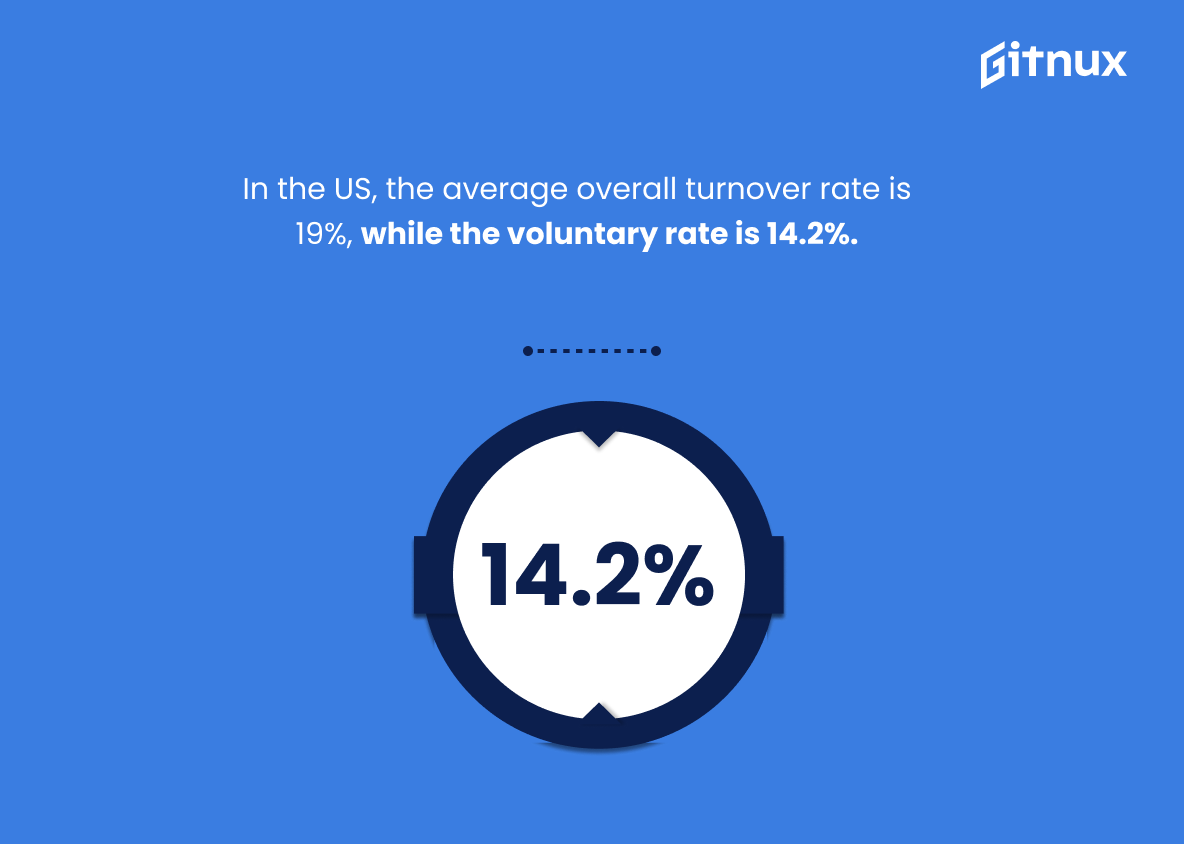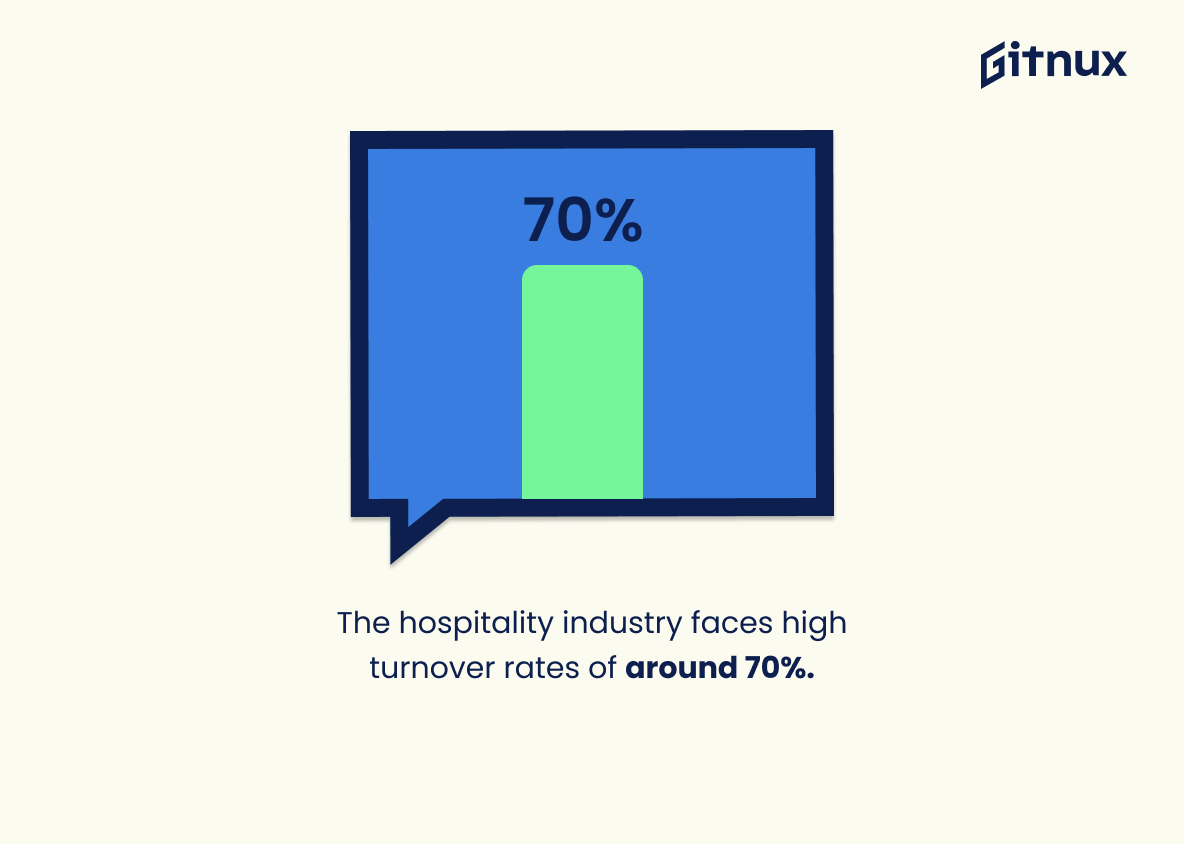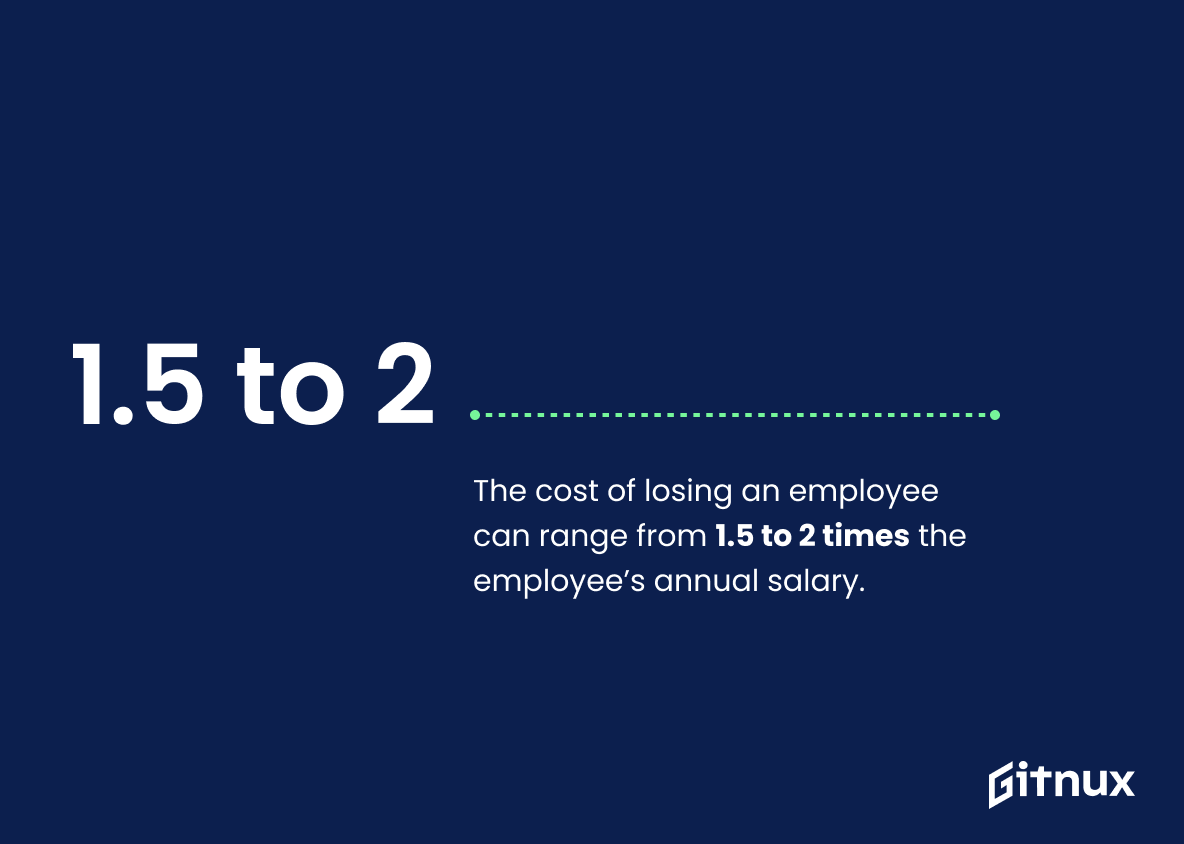The success of an organization largely depends on the loyalty and commitment of its employees. However, in today’s fast-paced business environment, employee turnover has become a crucial challenge that many companies grapple with. Understanding Employee Turnover Statistics is a necessary step in addressing this issue effectively. This blog post explores the intricate world of employee turnover, providing you with the latest statistics, analyzing trends, and shedding light on the impact of such turnover on companies. Whether you’re a business leader seeking solutions or an HR professional working on staff retention strategies, this comprehensive guide is packed with insights to help you navigate the complex landscape of employee turnover. Tune in and let’s dive into the numbers together.
The Latest Employee Turnover Statistics Unveiled
Approximately 3.5 million US employees voluntarily left their jobs by the end of February 2021, pushing the employee turnover rate to a two-year high of 2.7%.
Painting a backdrop of the American workforce landscape, this intriguing data unveils a shocking trend. Faced by the fact that close to 3.5 million US employees willingly bid adieu to their jobs by the closure of February 2021, casting the employee turnover rate to an unprecedented peak in two years at 2.7%, reveals more than meets the eye. It is this ripple effect in the employment sector that provides us with a vibrant palette of insights.
Firstly, it underscores the escalating volition among employees to switch jobs, possibly in search of better opportunities, career growth, or a more suitable work culture. It pivots a spotlight on the significance of companies proactively addressing aspects of employee retention and satisfaction. Additionally, this fast-paced turnover heightens the importance of companies investing in effective onboarding processes and ongoing employee development to maintain productivity amidst a rapidly changing work environment.
Ultimately, these statistics serve as a barometer to the health of the workplace ecosystem, painting a vivid picture of the employee turnover landscape. It urges companies to respond quickly and strategically to seismic shifts in employee preferences and market conditions, or risk a talent exodus that could potentially derail their business trajectory.
47% of HR leaders report that employee retention and turnover is their top workforce management challenge.
Delving into the heart of the matter, the revelation that 47% of HR leaders identify employee retention and turnover as their most formidable workforce management challenge lends significant weight to the discussion of Employee Turnover Statistics. Serving as a striking testament to the complexity and pressing nature of the issue, it implies a more profound undercurrent impacting business ecosystems worldwide.
Considering that HR leaders are on the frontline of managing, motivating, and retaining talent, this statistic is a potent indicator that organizations globally are grappling with staff retention and turnover issues, propelling it to the top of the agenda when it comes to workforce management. Consequently, the discussions around Employee Turnover Statistics in our blog post are not only timely but also relevant to nearly half of all HR professionals, illuminating the magnitude of this issue and the pressing need for effective solutions.
On average, US companies experience an annual employee turnover rate of about 10-15%.
Unfolding the curtain of the fascinating world of employee turnover statistics, we confront the star player – “An annual employee turnover rate of about 10-15% for US companies”. This player makes a significant impact in the arena, gracefully underpinning how dynamic the corporate landscape truly is.
Equating this rate to a tangible image, visualize this – if a company fields a 100-member team, it means nearly 10-15 seats shift each year. This constant reshuffling keeps the business atmosphere buzzing, injecting a dose of freshness yet also demanding constant adaptation and efforts in recruitment and retention.
Imagine the dominoes effect where turnover nudges further dominoes like recruitment costs, training time, productivity, company morale, and business performance. Hence, grasping this statistic isn’t just about counting numbers, but perceiving the pace of the corporate world and understanding the indirect infrastructural costs that come with the territory.
Moreover, our star player 10-15% offers a touchstone to compare across industries, providing valuable insights. Does a specific sector face higher turnovers, or is a particular company losing employees at a faster pace than the average? Answers mold strategic changes, driving businesses towards ameliorated human resource practices and improved work environments. Thus, this statistic proves to be a remarkable protagonist in comprehending the corporate odyssey.
Approximately 20% of new hires leave within the first 45 days.
Diving into this compelling statistic, we uncover a profound reality that about one in every five new employees waves goodbye within the first 45 days. This statistic is critical in a blog post about Employee Turnover Statistics because it paints a clear picture of the rapid, early-stage attrition faced by many organisations – a snapshot that will immediately engage readers.
Just imagine, for every 100 fresh faces walking through your office doors, an average of 20 of them are likely to vanish even before getting their feet fully settled. This revolving door scenario poses a significant management challenge but, more importantly, it underscores the importance of effective hiring practices, onboarding processes, and initial employee engagement strategies. It’s quite a sobering splash of cold water, prompting questions and insights that crystallize why such detailed discussions about Employee Turnover Statistics are not just relevant, but utterly essential in today’s dynamic workforce.
The cost to replace an employee averages 33% of their annual salary.
For readers diving into the labyrinth of employee turnover statistics, the fact that replacing an employee can cost around 33% of their annual salary might strike a chord. Imagine the character of your business funds draining away, unchecked, every time an employee parts ways with you. Envision your hard-earned profits evaporating, swept away by recruitment, training, and productivity losses – essentially, the unseen price tags of employee turnover. Scribbling a check equivalent to one-third of an annual salary for every departed employee, even on metaphorical paper, is a staggering financial reality few business owners would relish. This should serve as a clarion call to take staff retention as seriously as possible, thereby plugging this incessant financial bleed and boosting their bottom line.
Clinical psychologists, sales persons and marketing analysts jobs have high turnover rates, at 14.8%, 14.4% and 13.4% respectively.
In the kaleidoscope of Employee Turnover Statistics, these figures paint a vivid picture of a higher churn within certain professions. For those navigating in the spheres of Clinical Psychology, Sales, and Marketing Analysis,this 14.8%, 14.4%, and 13.4% turnover rate resounds like a gong, warning businesses to implement proactive strategies for retention. Ignoring these cautionary numerical whispers could result in losses in company growth, financial stability, and overall productivity. The gravity of these numbers will inspire bosses to cut the thread of high turnover and weave a tapestry of loyal, committed, and satisfied employees. So, buckle up and take notes as we dance through these figures and uncover methods for a more robust employee-retention strategy.
Companies that use predictive analytics had a 14.9% increase in employee retention.
Undeniably, losing experienced employees often imposes a heavy toll on a company’s productivity, morale, and financial stability; hence, the importance of employee retention. Now, imagine a magical lens that allows businesses to foresee the future, enabling them to devise strategies and make decisions to anchor their workforce. That is the power of predictive analytics, evidenced by an impressive 14.9% upsurge in employee retention for companies employing it. Therefore, engrossing ourselves in this statistic is like unlocking a treasure chest of insights for the blog on Employee Turnover Statistics, shedding light on how the discerning use of data-driven tools can lead to substantial retention improvement, and ultimately, healthier organizations.
87% of HR leaders consider improved retention a high/critical priority.
Delving into the number, ‘87% of HR leaders consider improved retention a high/critical priority,’ infuses context into the narrative surrounding Employee Turnover. It illuminates the challenges that modern HR teams grapple with daily, shedding light on the importance organizations place on employee retention. In fact, for almost nine out of ten HR leaders, this is no minor concern, rather a paramount goal. It provides a tangible measurement of the urgency to mitigate employee churn—an issue that, if overlooked, can leak resources, disrupt team cohesion, and fracture the long-termed growth of an organization. This statistic essentially serves as a heartbeat, echoing the profound need for strategies and solutions aimed at keeping employee turnover to a minimum.
E-commerce sector experiences the highest annual employee turnover rate, which is around 58.9%.
Painting a vivid picture of a rapidly shifting landscape, the statistic that the e-commerce sector is subject to an annual employee turnover rate of approximately 58.9% forms an integral part of our conversation on employee turnover statistics. It introduces a fascinating narrative of an industry wherein human capital is highly transient, encapsulating the very essence of the challenges and dynamics associated with the topic. This percentage inherently emphasizes the vitality of understanding and reducing turnover rates, especially in such a fast-paced, digitalized sector as e-commerce. So, the blog post would resonate to anyone aspiring to explore concepts of employee retention, job satisfaction, and the correlation between employee stability and business success specifically in online marketplaces. At best, it could be a call-to-action for businesses in this sector to delve deeper into employee engagement and retention strategies.
In the US, the average overall turnover rate is 19%, while the voluntary rate is 14.2%.
Painting an empirical canvas of the labor landscape in the US, these figures gleam a potent reality—nearly a fifth of employees are experiencing turnover. Echoing the turbulence in these statistics, it manifests the fluidity and dynamism of the modern work world. The 19% overall turnover rate broadbrushes the magnitude of the churn across industries.
Drilling deeper, the 14.2% voluntary rate shines a spotlight on the rising confidence of employees to steer their career path. It mirrors the advent of increasing job opportunities, employee empowerment, and the quest for better work-life harmony.
Both these statistics together aren’t merely data; they are the pulse of the workplace ecosystem that signals employers to foster a more engaging, fulfilling and stable environment. They bolster the necessity for employers to invest in strategies to lower these numbers, thereby nurturing employee loyalty and solidifying the workforce backbone. These very statistics provide the numerical backbone to this blog post on employee turnover, reinforcing its relevance and importance in the realm of business operations.
40% of employees who receive poor job training leave within the first year.
In the intriguing world of employee turnover statistics, the figure ‘40% of employees who receive poor job training leave within the first year’ plays a pivotal role like a seasoned actor in a blockbuster movie. Just imagine. Almost half of your trained personnel could slip away, simply because of inadequate training. This mesmerizing number unearths the profound correlation between quality training and employee retention, serving as a stark reminder for companies to invest in robust and comprehensive training programs. Ignoring this statistic is akin to neglecting a volcano that’s about to erupt – the consequences can be destructive for the organizational health and vitality. It’s an ominous alarm, alerting businesses about the unaffordable cost of negligence in employee training. A simple enhancement in job training can transform this depressing turnover number to a gratifying retention rate, reinstating the script of success in the corporate arena.
The hospitality industry faces high turnover rates of around 70%.
Highlighting a staggering 70% turnover rate in the hospitality industry can serve as a stark alarm bell, underscoring the gravity of employee churn in this sector. In a blog post about Employee Turnover Statistics, such a figure stands as a high tide mark, illuminating extensive disruptions and the potential for financial and operational instability within this particular industry. It also provokes a deeper exploration of the driving forces behind this rate, engaging readers by stoking curiosity about potential mitigation strategies or industry-wide solutions.
The cost of losing an employee can range from 1.5 to 2 times the employee’s annual salary.
Shedding light on the tangible cost of losing an employee – that it can range from 1.5 to 2 times the employee’s annual salary – presents a whole new perspective on employee turnover. In a blog post revolving around Employee Turnover Statistics, this point serves as a stark reminder of the financial implications of high staff attrition rates. Such a statistic drives home the fact that a revolving door of employees not only disrupts team dynamics and workflow, but also puts a hefty dent in a company’s finances. Hence, employers are urged to invest more in employee satisfaction and engagement as a preventative measure to soften this hefty fiscal blow and, in the long run, secure a more stable workforce and healthy work environment.
Conclusion
Understanding and addressing employee turnover statistics is crucial in building a sustainable, successful business. High turnover rates can negatively affect a company’s morale, productivity, and finances. But with the information and insights presented in these statistics, businesses can devise effective retention strategies that foster employee satisfaction, loyalty, and long-term commitment. These data serve as a wake-up call for businesses to invest more in their human resources — for it is in nurturing a motivated and stable workforce that a business truly thrives.
References
0. – https://www.www.hotstats.com
1. – https://www.www.td.org
2. – https://www.www.go2hr.ca
3. – https://www.www.workinstitute.com
4. – https://www.www.bls.gov
5. – https://www.www.benefitnews.com
6. – https://www.www.gethppy.com
7. – https://www.www.visier.com
8. – https://www.smallstarter.com
9. – https://www.www.shrm.org
10. – https://www.www.gallup.com

